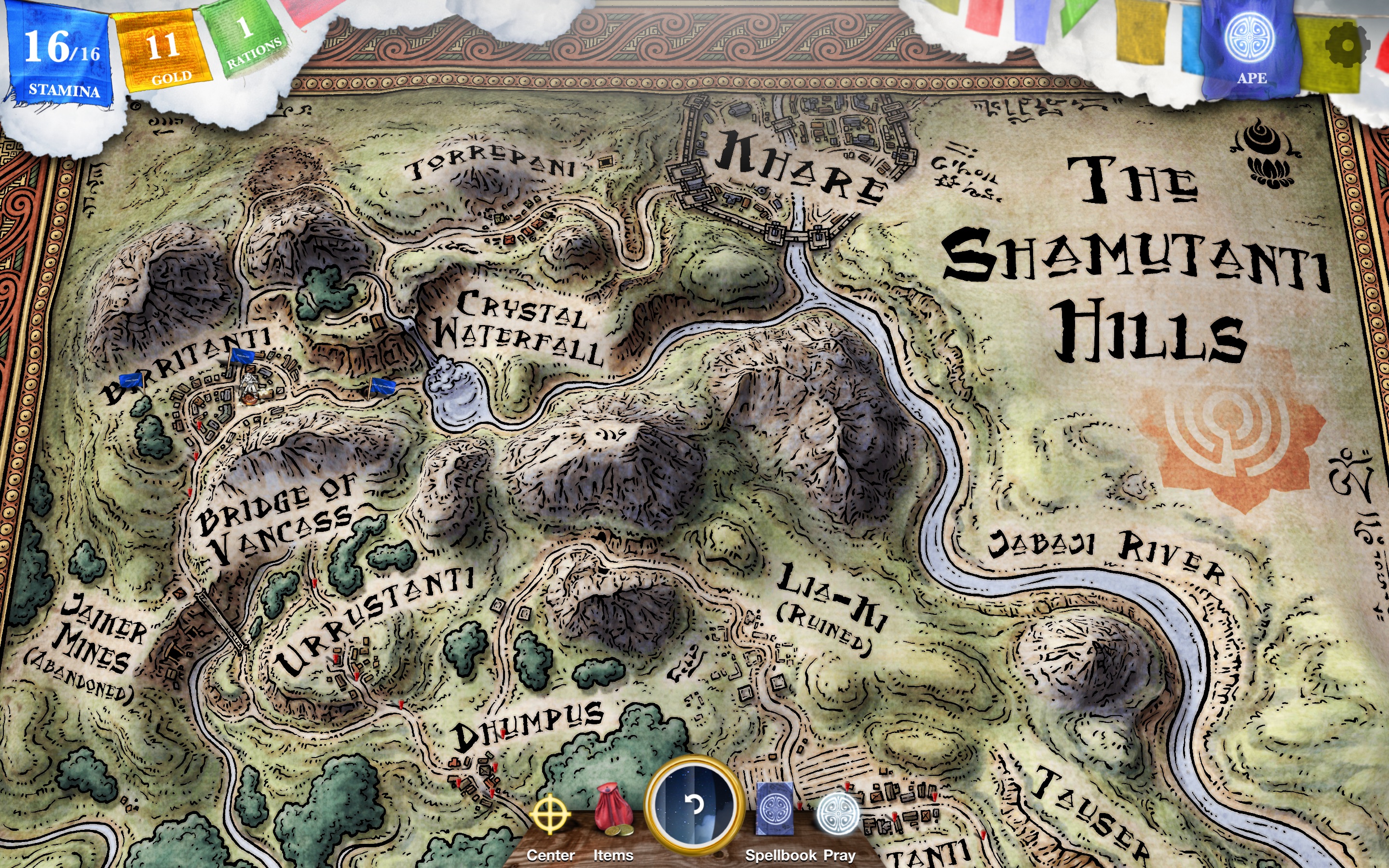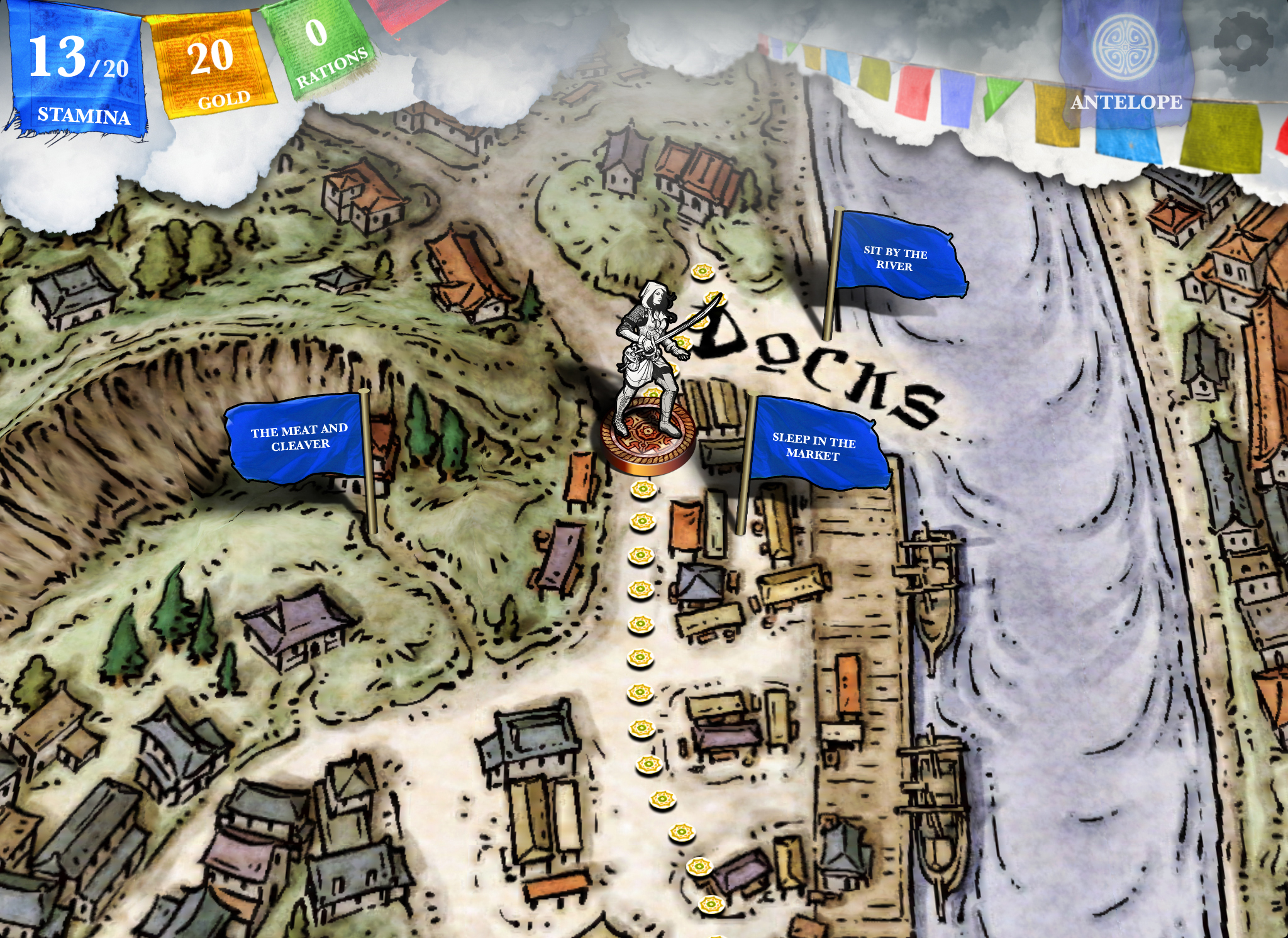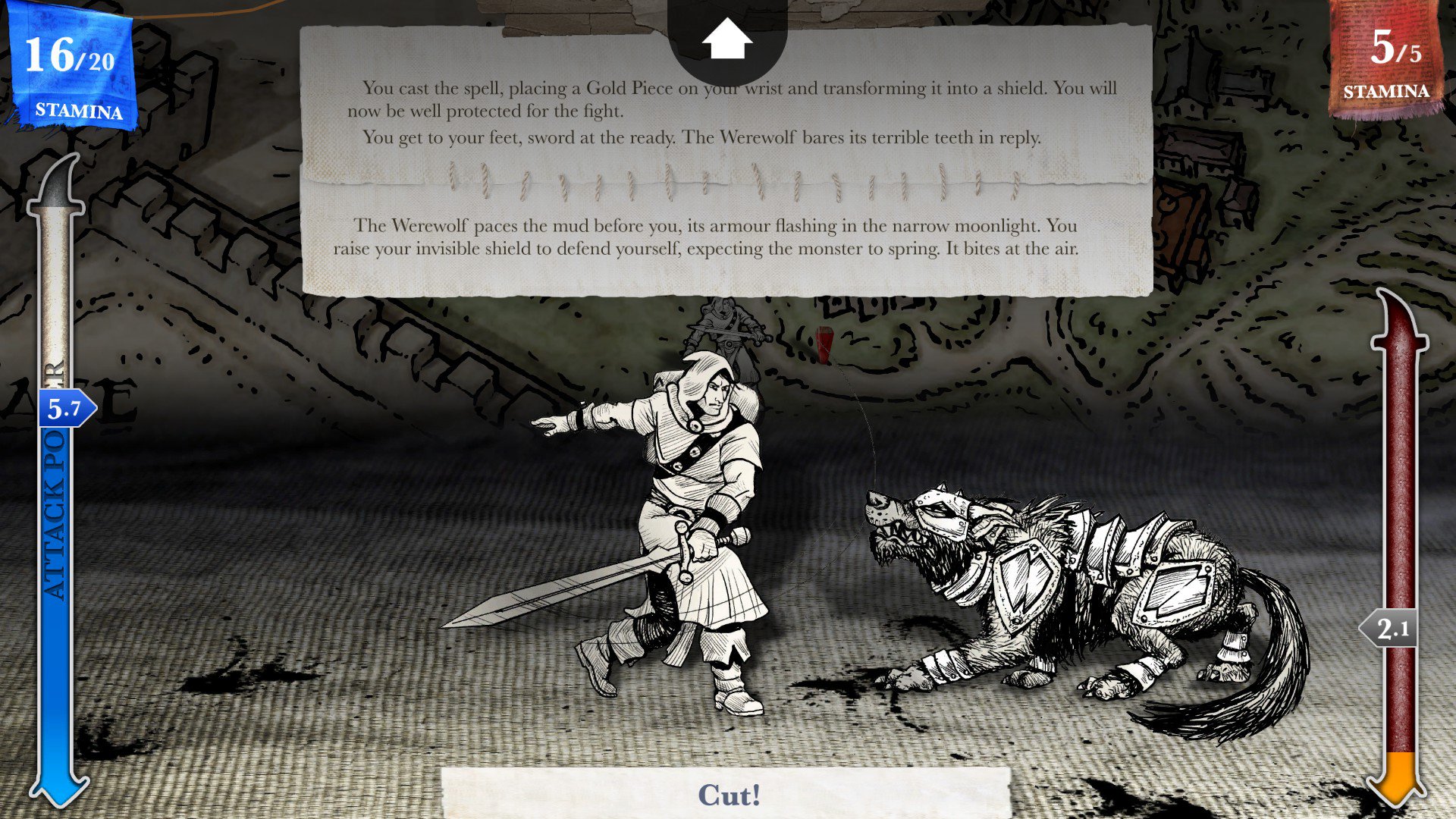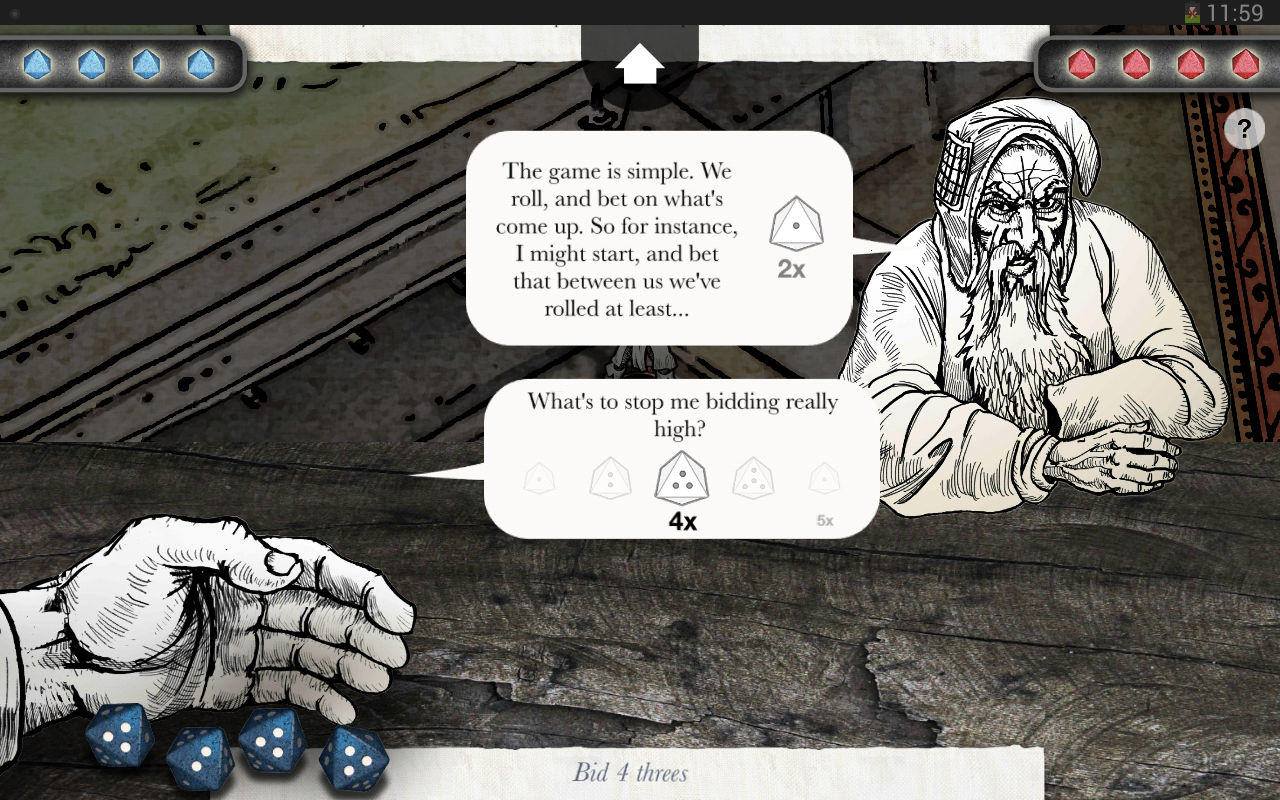You pick up the small leather bound booklet called Sorcery!, the smooth texture of the cover feels comfortable under your fingertips, the engraving is delicate and precise, you open the first page and start to read…
Although the first one has been available for four years now it was only last month that I picked up the first issue of Steve Jackson’s Sorcery! from Inkle on Android.

This little android adventure is not small at all, based on the 4 book Fighting Fantasy game books written by Steve Jackson, the studio decided to take a similar approach and issue a four game adventure, releasing one each year. As I have only completed the first two books and have yet to purchase last year’s volume 3 or the recently released fourth and last issue the review will focus on the ones I played. This is not a problem as the games, much like the books can be played individually, although the original intention is to follow through the full adventure.
The first thing we notice when playing the game is the ease with which the studio managed to adapt the adventure to this medium, combining several aspects of different gameplays into one seamless unit. The original book RPG worked as many others created by Steve Jackson and his partner Ian Livingstone, where the player read through a series of descriptions and chose what to do next, the book would then direct them to a numbered paragraph/page to discover the consequences of that choice and carry on.

Inkle managed to take this page system and transformed it into a huge, beautifully hand painted 3D board game, where the player can sometimes choose the actions after reading a portion of text or track a path on the screen to the physical direction they want to go. As in many other such games every decision counts and may (very likely) lead the player to an untimely and gruesome death. Still they also were nice enough to allow the player to backtrack their actions at any point, leaving a marker in each action of the game so that they didn’t have to start over for taking the literal wrong turn. And although this may look like an easy route, believe me it’s not because we may not know how far back the wrong turn was taken.
The game has at least a few hundred combinations due to the not having merely one set path, some lead to death and others to the ending of the chapter but how we get there and what we take with us to the other games. A good example is that in the first game I had the chance to kill a character however chose not to. In the second one we met again and he gave me some information that although it was not essential it was extremely helpful. Another one is that by the end of the second adventure I had the chance to replay it to finish that specific book’s quest, or carry on to the next book never looking back. It’s these little things that make this game great.

The old dice roll fight system was also replaced by a sort of betting game where we can defend losing only one stamina point if our opponent attacks (in these stamina is equivalent to health) or we can bet on strength and hope we are betting more than the opponent doing more damage that way, a simple system for the user but complex in the end.
The two titles, of which I will not go into the story so I don’t spoil it for the future readers, play in an identical way except for the addition of more detailed indoor maps and the mini game Swindlestones on the second. The mini game is a nice touch but is easily won once we get a hang of the system and can be exploited to increase our gold storage.
Although it is also available on Steam, I believe that this is a perfect companion for daily commutes as the Android and IOS versions are perfectly adapted. At a cost of €5.50 each, the first two are definitely a must buy for fans of these types of adventures. I cannot say anything about the last two except that I doubt the team decreased the quality of their work so I am willing to bet the full lot is money well spent.

You close the book, and are now ready to finish your journey:
N.B. Although it can be read separately, this article is a companion piece to the Fighting Fantasy – Books we used to play text published at the same time. If the introduction and ending appear strange please read the main article.













